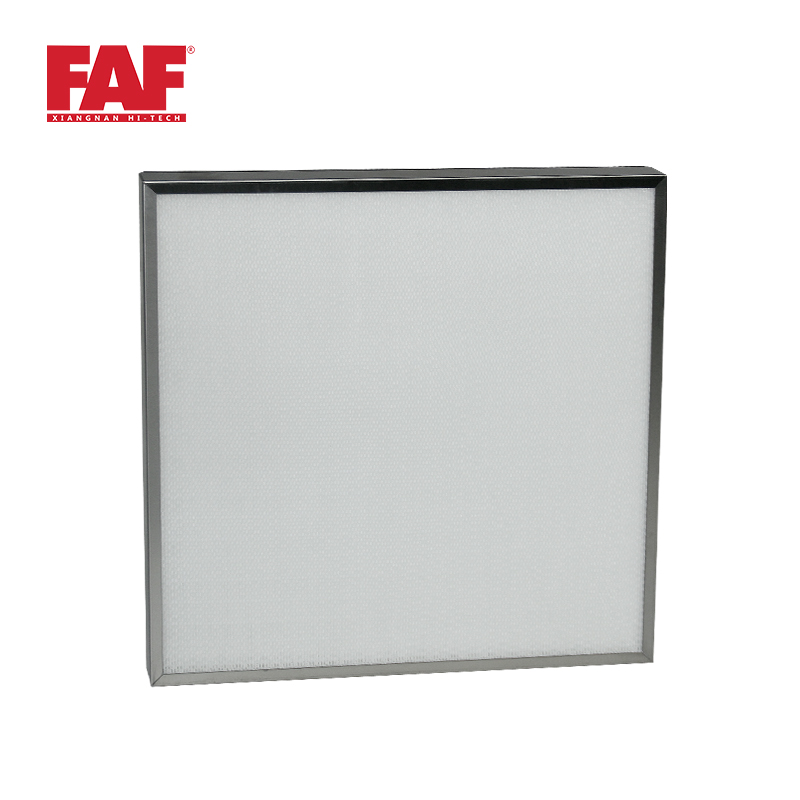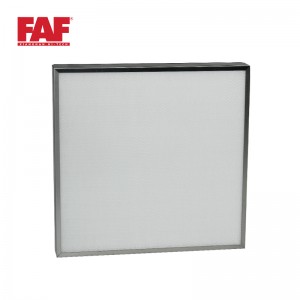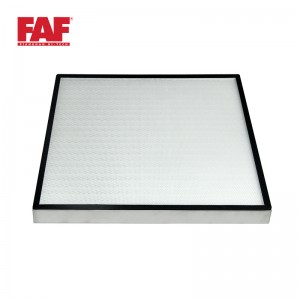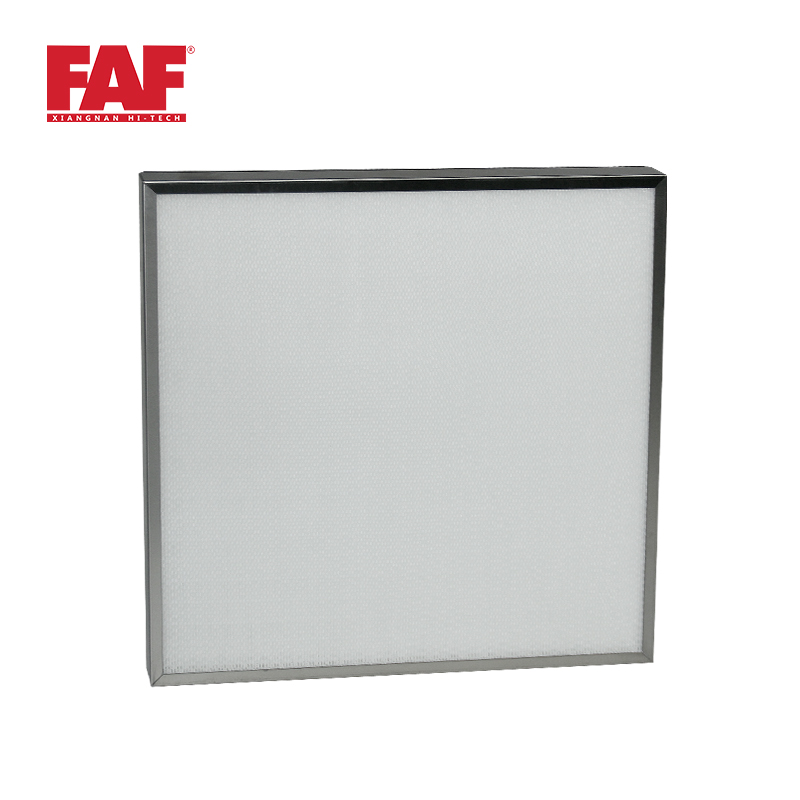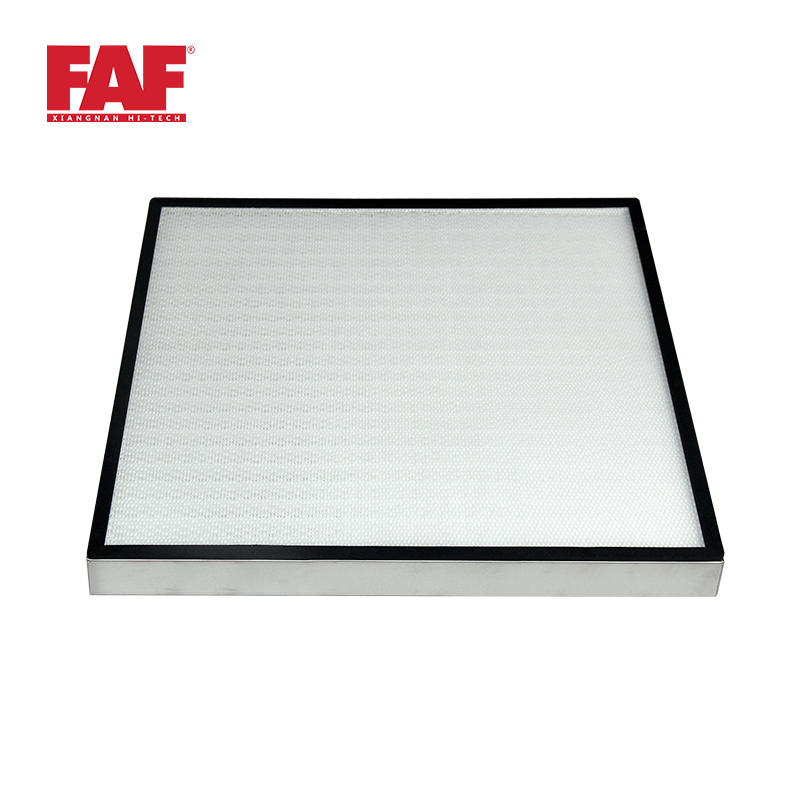FAF Products
Medium-efficiency Air Filter for Salt Spray Removal
Features of the Medium-efficiency Air Filter for Salt Spray Removal
Large filtration area, large dust capacity, long service life, excellent filtration accuracy and effect.
Applied to the development of marine oil and gas resources equipment: drilling platforms, production platforms, floating production and storage vessels, oil unloading vessels, lifting vessels, pipelaying vessels, submarine trenching and burying vessels, diving vessels, and other precision instruments in the engine room for medium efficiency filtration.
Composition materials and operating conditions of the medium-efficiency air filter for salt mist removal
● Outer frame: stainless steel, black plastic U-shaped groove.
● Protective net: stainless steel protective net, white square hole plastic protective net.
● Filter material: M5-F9 efficient salt spray removal performance glass fiber filter material, mini-pleated.
● Partition material: environmentally friendly hot melt adhesive.
● Sealing material: environmentally friendly polyurethane AB sealant.
● Seal: EVA black sealing strip
● Temperature and humidity: 80 ℃, 80%
Technical parameters of the medium-efficiency air filter for salt mist removal
| Model | Size(mm) | Air Flow(m³/h) | Initial Resistance(Pa) | Efficiency | Media |
| FAF-SZ-15 | 595x595x80 | 1500 | F5:≤16±10%F6:≤25±10%F7:≤32±10%F8:≤46±10%
F9:≤58±10% |
F5-F9 | Glassfiber |
| FAF-SZ-7 | 295x595x80 | 700 | |||
| FAF-SZ-10 | 495x495x80 | 1000 | |||
| FAF-SZ-5 | 295x495x80 | 500 | |||
| FAF-SZ-18 | 595x595x96 | 1800 | |||
| FAF-SZ-9 | 295x595x96 | 900 | |||
| FAF-SZ-12 | 495x495x96 | 1200 | |||
| FAF-SZ-6 | 295x495x96 | 600 |
Note: Other thicknesses of desalination mist medium effect air filters can also be customized.
FAQ: What is corrosion?
Gas Turbine engine performance degradation is classified as either recoverable or non-recoverable. Recoverable performance degradation is usually due to compressor fouling and can normally be overcome by online and offline water washing. Non-recoverable performance degradation is usually caused by rotating internal engine part wear, as well as plugging of cooling channels, erosion & corrosion due to contaminants in the air, fuel and / or water.
Ingested contaminants can result in corrosion of the compressor, combustor and turbine sections of a gas turbine engine. Hot corrosion is the most serious form of corrosion experienced in the turbine section. It is a form of accelerated oxidation that is produced between components and molten salts deposited on its surface. Sodium sulfate, (Na2SO4), is usually the primary deposit instigating hot corrosion, and becomes more severe as the gas turbine section temperature levels increase.


